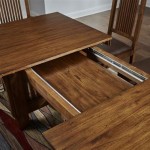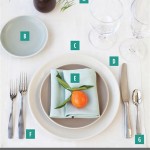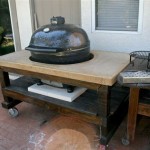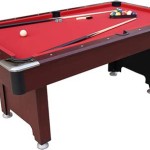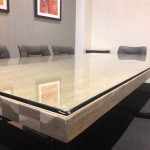Tablecloth 120 X 60: A Comprehensive Guide
A tablecloth, often underestimated, plays a pivotal role in setting the tone for any dining experience. It serves not only a practical purpose by protecting the table surface but also contributes significantly to the aesthetic appeal of the room. The size of the tablecloth is crucial, and a 120 x 60 tablecloth is specifically designed for tables with corresponding dimensions, or those where a specific overhang is desired. Understanding the nuances of selecting, using, and caring for a 120 x 60 tablecloth can greatly enhance the ambiance of a dining space.
This article will delve into the specifics of a 120 x 60 tablecloth, exploring its suitability for various table sizes, the different materials available, factors to consider when choosing the right one, proper care instructions, and its versatility in various settings. Through a detailed examination of these aspects, a clearer understanding of how to best utilize a 120 x 60 tablecloth will be established.
Determining the Correct Table Size for a 120 x 60 Tablecloth
The primary consideration when purchasing a tablecloth is ensuring it fits the table correctly. A 120 x 60 tablecloth is generally best suited for tables that measure close to these dimensions. However, the desired overhang significantly impacts the suitability. An overhang refers to the portion of the tablecloth that drapes over the edge of the table.
For a table that measures exactly 120 x 60 inches, the tablecloth will create a clean, flush finish, with minimal to no overhang. This is a modern, streamlined look favored in contemporary settings. However, most people prefer some amount of overhang. A standard overhang ranges from 8 to 12 inches. This means you need to account for the combined length and width of the table plus twice the desired overhang amount.
Therefore, to determine the ideal table size for a 120 x 60 tablecloth with an 8-inch overhang, subtract 16 inches (8 inches x 2) from both the length and width. This results in a corresponding table size of 104 x 44 inches. For a 10-inch overhang, the corresponding table size would be 100 x 40 inches. These calculations are essential to achieve the desired aesthetic and functional balance.
It is crucial to accurately measure the table before purchasing a tablecloth. Length and width should be measured carefully, and any leaves or extensions should be accounted for if the table is extendable. Failing to accurately measure can lead to an ill-fitting tablecloth that is either too short, exposing the table surface, or too long, creating a tripping hazard and looking untidy.
Material Options for 120 x 60 Tablecloths
The material of a tablecloth greatly influences its appearance, durability, and ease of care. A wide variety of materials are available for 120 x 60 tablecloths, each possessing unique characteristics that make them suitable for different uses and preferences.
Cotton: Cotton is a popular choice due to its affordability, softness, and natural appearance. Cotton tablecloths are absorbent, making them suitable for everyday use. However, they are prone to wrinkling and may require ironing after washing. They can also be susceptible to staining if spills are not addressed promptly. Cotton blends, such as cotton-polyester, offer increased durability and wrinkle resistance.
Linen: Linen is a premium natural fiber known for its elegant drape and sophisticated texture. Linen tablecloths are highly absorbent and become softer with each wash. While linen wrinkles easily, this is often considered part of its charm. Linen is a durable material but requires careful washing and ironing to maintain its pristine appearance. Linen tablecloths are often favored for formal occasions and special events.
Polyester: Polyester is a synthetic fabric known for its durability, wrinkle resistance, and stain resistance. Polyester tablecloths are easy to care for, making them a practical choice for frequent use. They are less absorbent than natural fibers but offer excellent protection against spills. Polyester is a budget-friendly option and is available in a wide range of colors and patterns.
Vinyl: Vinyl tablecloths are waterproof and stain-resistant, making them ideal for outdoor use or for households with young children. They are easy to wipe clean and require minimal maintenance. However, vinyl tablecloths can lack the elegance and sophistication of natural fibers. They are available in various thicknesses and patterns, ranging from simple solid colors to more elaborate designs that mimic the look of fabric.
Damask: Damask is a patterned fabric woven with a satin or twill weave. Damask tablecloths are typically made from cotton, linen, or silk and feature intricate designs that add a touch of formality and elegance to any dining setting. Damask tablecloths require careful handling and may need professional cleaning to maintain their intricate patterns.
The choice of material depends largely on the intended use, the desired level of formality, and the user's preferences regarding maintenance and aesthetics. Considering these factors will help in selecting the most suitable material for a 120 x 60 tablecloth.
Factors to Consider When Choosing a 120 x 60 Tablecloth
Selecting the right 120 x 60 tablecloth involves carefully considering several factors beyond just the dimensions and material. These factors include the overall style of the dining space, the frequency of use, the level of maintenance required, and the budget.
Style and Aesthetics: The tablecloth should complement the existing décor of the dining room or the intended setting. A formal dining room may benefit from a linen or damask tablecloth in a classic color, while a more casual space might be better suited for a cotton or polyester tablecloth in a brighter color or pattern. The color of the tablecloth should also coordinate with the surrounding furniture, tableware, and accessories. Neutral colors like white, cream, and gray are versatile and can be easily paired with various color schemes. Patterns can add visual interest, but should be chosen carefully to avoid clashing with other elements in the room.
Durability and Maintenance: The frequency of use dictates the required level of durability. A tablecloth used daily should be made from a durable, easy-to-clean material like polyester or a cotton blend. A tablecloth used only for special occasions can be made from a more delicate material like linen or damask, but it will require more careful handling. Consider the washing instructions for each material and whether it requires ironing or special cleaning. Choose a material that aligns with the user's willingness to invest time and effort in maintenance.
Stain Resistance: If the tablecloth is likely to be exposed to frequent spills, consider a stain-resistant material like polyester or vinyl. Treated cotton or linen tablecloths are also available with stain-resistant finishes, which can provide added protection. Darker colors and patterned fabrics can help to conceal stains and spills more effectively than light, solid colors. Pre-treating stains promptly is crucial, regardless of the material, to prevent them from setting in permanently.
Budget: Tablecloths range in price from budget-friendly polyester options to more expensive linen and damask tablecloths. Determine a budget before beginning the search and prioritize the factors that are most important, such as material, durability, and style. Consider investing in a higher-quality tablecloth if it will be used frequently, as it will likely last longer and provide a better overall experience.
Occasion: Everyday use tablecloths can be functional and durable. Tablecloths for specific holidays can feature seasonal patterns and colors. Formal events might call for luxurious materials and intricate designs.
Proper Care and Maintenance of a 120 x 60 Tablecloth
Proper care and maintenance are essential to prolong the life of a 120 x 60 tablecloth and keep it looking its best. The specific care instructions vary depending on the material, but some general guidelines apply.
Washing: Follow the manufacturer's instructions for washing the tablecloth. Most cotton and polyester tablecloths can be machine washed in cold or warm water with a mild detergent. Linen tablecloths should be washed in cool water on a gentle cycle. Avoid using harsh detergents or bleach, as these can damage the fibers and fade the colors. For delicate fabrics like damask, professional cleaning is often recommended.
Drying: Tumble dry cotton and polyester tablecloths on a low setting to minimize wrinkling. Linen tablecloths can be air-dried or tumble dried on a very low setting. Remove the tablecloth from the dryer promptly to prevent wrinkles from setting in. Avoid over-drying, as this can cause shrinkage or damage to the fibers.
Ironing: Iron cotton and linen tablecloths while they are still slightly damp to ease out wrinkles. Use a medium heat setting and iron on the reverse side of the fabric to protect the colors and patterns. Polyester tablecloths generally do not require ironing. If ironing is necessary, use a low heat setting and iron on the reverse side.
Stain Removal: Treat stains promptly to prevent them from setting in permanently. Blot the stain with a clean cloth or paper towel, working from the outside in. Avoid rubbing the stain, as this can spread it further. Use a stain remover that is appropriate for the fabric type and follow the manufacturer's instructions. For stubborn stains, consider soaking the tablecloth in a solution of water and mild detergent before washing.
Storage: Store tablecloths in a cool, dry place away from direct sunlight to prevent fading and mildew. Fold tablecloths neatly and avoid stacking heavy items on top of them. Consider storing tablecloths in a fabric storage bag or container to protect them from dust and pests.
Rotation: Rotate tablecloths regularly, especially if you have multiple tablecloths for the same table. This will help to distribute wear and tear evenly and prolong the life of each tablecloth.
Versatility of a 120 x 60 Tablecloth in Various Settings
A 120 x 60 tablecloth is a versatile accessory that can be used in a variety of settings, from formal dining rooms to casual outdoor gatherings. Its adaptability stems from its ability to transform the look and feel of a table, setting the stage for different occasions.
Formal Dining: In a formal dining room, a 120 x 60 tablecloth made from linen or damask can create an elegant and sophisticated atmosphere. Pair it with fine china, crystal glassware, and silver cutlery to complete the look. Choose a classic color like white, cream, or ivory for a timeless appeal. Add subtle embellishments like embroidered details or a delicate pattern to enhance the overall aesthetic.
Casual Dining: For everyday meals or casual gatherings, a 120 x 60 tablecloth made from cotton or polyester can provide a more relaxed and informal setting. Choose a bright color or playful pattern to add a touch of personality to the table. Pair it with durable tableware, colorful napkins, and simple centerpieces to create a welcoming atmosphere.
Outdoor Events: A 120 x 60 tablecloth made from vinyl or polyester is ideal for outdoor events such as picnics, barbecues, and garden parties. These materials are durable, stain-resistant, and easy to clean, making them perfect for outdoor use. Choose a vibrant color or festive pattern to complement the outdoor setting. Secure the tablecloth with clips or weights to prevent it from blowing away in the wind.
Holiday Celebrations: A 120 x 60 tablecloth can be used to create a festive atmosphere for holiday celebrations. Choose a tablecloth with a holiday-themed pattern or color scheme to complement the occasion. For example, a red or green tablecloth can be used for Christmas, while a pastel-colored tablecloth can be used for Easter. Add holiday-themed decorations and centerpieces to complete the look.
Crafting and Hobby Tables: A 120 x 60 tablecloth, especially one made of vinyl, can protect the surface of a crafting or hobby table. It is easy to clean and resistant to spills and stains from paints, glues, and other materials commonly used in crafting activities.

120 X 60 Solid Tablecloth Natural Threshold Target

120 X 60 Solid Tablecloth Gray Threshold Target

Elrene Home Fashions Winter Holiday Berry Fabric Tablecloth 120 X 60 Bloomingdale S

Easter Rectangle Tablecloth 60x120 Inch Spring Fl And Bunny Table Cloths Spill Proof Wrinkle Cloth For Kitchen Dining Decoration Holiday Parties Com

Continental Solid Texture Water And Stain Resistant Tablecloth 60 X 120 Black Elrene Home Fashions Target

Villeroy Boch Toy S Delight Engineered Rectangle Tablecloth 120 X 60 Bloomingdale

Threshold Oblong Table Cloth 120 X 60

Dii Outdoor 60 In X 120 Summer Stripe Polyester With Zipper Tablecloth Camz34859 The Home Depot

60 X 120 Rectángular Polyester Tablecloth Linens Thanks Table Decor Dining Kitchen Buffet Picnic

Valentines Tablecloth Valentine S Day For Rectangle Tables 60 X 120 Perfect Kitchen Dinner Date Restaurant Decoration Holiday Dining Room Table Cloth Com
Related Posts

